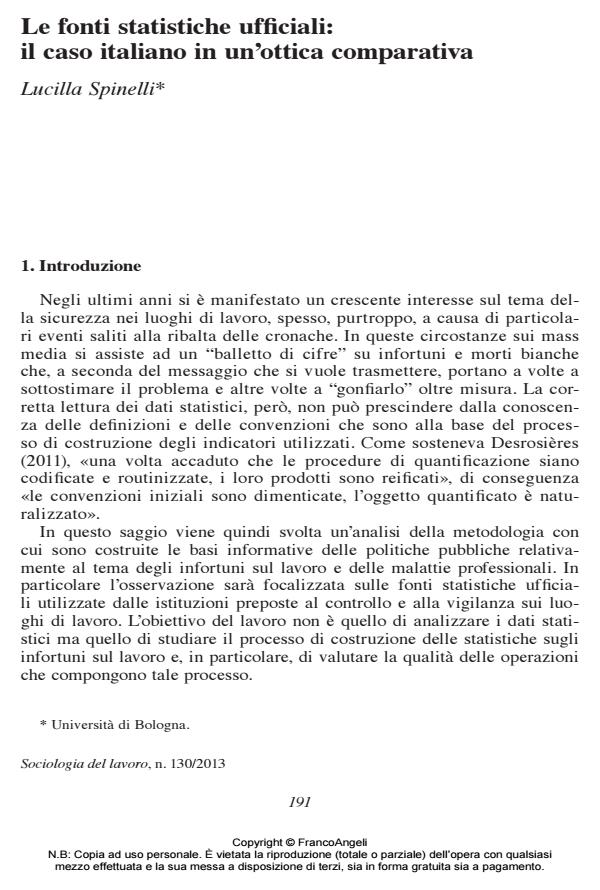The official statistical sources: the Italian case in a comparative perspective
Journal title SOCIOLOGIA DEL LAVORO
Author/s Lucilla Spinelli
Publishing Year 2013 Issue 2013/130
Language Italian Pages 15 P. 191-205 File size 249 KB
DOI 10.3280/SL2013-130012
DOI is like a bar code for intellectual property: to have more infomation
click here
Below, you can see the article first page
If you want to buy this article in PDF format, you can do it, following the instructions to buy download credits

FrancoAngeli is member of Publishers International Linking Association, Inc (PILA), a not-for-profit association which run the CrossRef service enabling links to and from online scholarly content.
The growing interest that manifested towards the theme of safety at work raised the question of the correct interpretation of official statistics that allow to look at this circumstance. In this paper, an analysis of the methodology used to construct the informative bases of public policies regarding the topic of work injuries and occupational diseases, with the aim of evaluating the quality of operations that compose this process. Analysis is then taken into the construction system of official statistics in our country are provided by Inail. The same was then compared with that used by other European countries, in particular, we choose to examine the methodology used by a country where the insurance system is adopted, France, and a country in which is in force a social security system, Sweden.
Keywords: Safety at work, official statistics, quality, occupational accidents, risk, statistical data
Lucilla Spinelli, Le fonti statistiche ufficiali: il caso italiano in un’ottica comparativa in "SOCIOLOGIA DEL LAVORO " 130/2013, pp 191-205, DOI: 10.3280/SL2013-130012